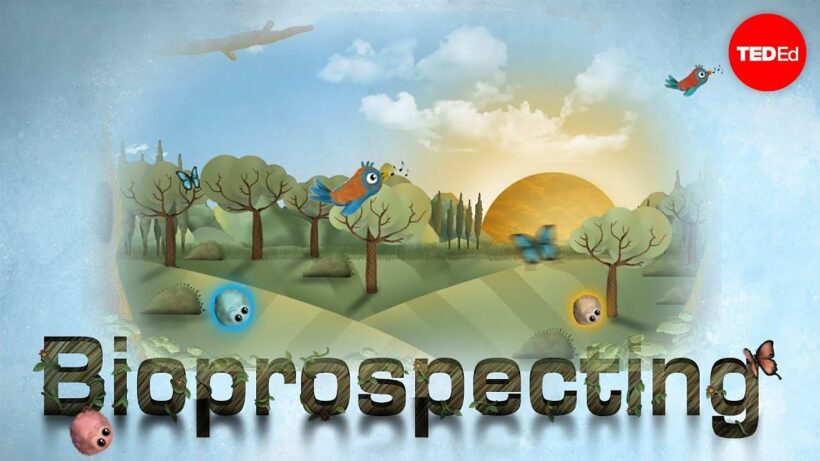On June 30th, the United Nations Development Program (UNDP) published a report, titled ‘The New Gold Rush: Bioprospecting,” which elucidates the benefits of bioprospecting for sustainable economic development for underdeveloped countries. Bioprospecting is the exploration of biodiversity for animal and plant substances for medicinal, biochemical, or other commercial purposes. One cause of the socio-economic disparity between rich and poor countries stems from colonial practices of environmental exploitation; larger countries pilfered the resources of smaller countries or current or former colonies to support the metropole’s industrialization and growth.
As underdeveloped countries aim to promote economic growth and political stability, the UNDP report encourages the sustainable extraction of plant and animal substances for pharmaceutical and biochemical purposes, specifically discussing bioprospecting’s potential in Cambodia due to its wealth of biodiversity. As the report articulates, as Cambodia transitions from a “subsistence agriculture-based economy to an agro-industrial economy, its biological resources are increasingly under threat.”[1] Bioprospecting would thus harness traditional environmental knowledge alongside modern science and technology to promote sustainable development; in this way, the UNDP report attempts to revitalize the goals of the 1992 Convention on Biological Diversity (CBD).
Policy and scientific recommendations on how to deal with the loss of biodiversity due to climate change gained traction with the IUCN’s (International Union for the Conservation of Nature) Commission on Environmental Law in the 1980s. Their efforts fed into the United Nations Environment Program (UNEP) Ad Hoc Working Group of Experts on Biological Diversity in November 1988, which advocated for a multilateral institution to establish norms and protection over biodiversity– ultimately leading to the 1992 Convention on Biological Diversity (CBD). The CBD sought to reconcile the need to conserve biodiversity, but also recognize its utilization towards economic and societal development for underdeveloped nations. The CBD begot a Treaty that established three goals: the conservation of biological diversity; the sustainable use of its components; and the fair and equitable sharing of benefits arising from its resources. 196 parties have ratified the treaty, including China, the U.K, Canada, and the E.U, but not the U.S due to its failure to pass the Senate. Its failure derived from three fears of U.S policy makers: that U.S biotech corporations would be required to share their intellectual property in genetic research with other countries; that the U.S would become financially responsible for other country’s conservation; and that the CBD would impose more environmental regulations on the U.S.[2] Even after the Biden Administrations’ efforts to reimpose environmental policy slashed by Trump, similar concerns are thwarting their efforts to ratify the CBD.
These guidelines thus recognize the right of a country to benefit from the extraction of its resources and attempted to prevent biopiracy – a centuries old practice through which indigenous environmental knowledge was exploited and turned to profit. While not a new practice, biopiracy surged throughout the 20th century as modern biotech fields crystallized, often developing by drawing on indigenous knowledge of plants and animals and then patenting them. Furthermore, the Treaty stipulates that potential bioprospectors would need permission from the country’s government,and would require them to state the country of origin of the resource in the patent. The country’s government may also impose access fees or royalty payments for bioprospectors and obtain the research results. Supplementary protocols sprouted from the initial CBD Treaty, including the 2010 Nagoya Protocol, which helped promote the fair and equitable sharing of benefits arising out of the utilization of genetic resources, and the 2000 Cartagena Protocol, which ensures the safe handling of living modified organisms (LMOs) resulting from biotechnology. Such guidelines attempt to reaffirm small countries’ sovereignty over their land and resources, promote sustainable utilization of plant and animal substances, and avoid the recurrence of environmental exploitation that has, among other factors, impeded development in the past.
The inhabitants of the mountainous upland regions of Cambodia have a rich knowledge base of natural resources and conservation. Their cultural norms and worldviews, as well as their livelihoods depend upon a symbiotic relationship with their environment. Climate change currently threatens more than 300 medicinal plants that are native to Cambodia and face extinction. One such plant is Tepongru (Cinnamomum cambodianum), a species of cinnamon that grows in the Cambodian mountains. The healers and herbalists of Khmer traditional medicine– or Kru Khemer, harvest the bark of Tepongru to cure indigestion, tuberculosis, and the regulation of menstruation[3]. The bark also has high concentrations of cinnamaldehyde and eugenol, which biotechnology companies synthesize to use in both perfumes and essential oils, but also as an anesthetic. Furthermore, Kru Khemer engage in a variety of traditional medical practices including bone setting, herbalism, and divination; in this way, Kru Khemer maintain a vital societal role given their deep knowledge not just in medicinal plants and animals, but also in their knowledge of spiritual rituals that mediate the supernatural and the plant.
The CBD Treaty has been interpreted as an important step in sustainable development, a goal for which the U.N established its own ‘Sustainable Development Goals’ protocol under its department of Economic and Social Affairs. Furthermore, the report describes how the UNDP has attempted to support the goals of the CBD in actionable policy: “since 2011 the UNDP, with funding from the Nagoya Protocol Implementation Fund (NPIF) and the Global Environment Facility (GEF), has been supporting governments, local communities, and the private sector to develop national ABS frameworks, build capacities, and harness the potential of genetic resources”[4]— and specifically, the UNDP is working with Cambodian officials to implement the new project “Developing a Comprehensive Framework for Practical Implementation of the Nagoya Protocol in Cambodia”. And so, despite lacking crucial support from the United States, responsible bioprospecting, and the revitalization of the CBD, presents an opportunity in combating climate change while encouraging sustainable development and international economic equality; the most effective practices for successful environmental protection derive from supranational pursuits, but they still require national cooperation.
[1] https://undp-biodiversity.exposure.co/the-new-gold-rush-bioprospecting
[2] https://www.vox.com/22434172/us-cbd-treaty-biological-diversity-nature-conservation
[3] p. 189 in “Ethnoveterinary Botanical Medicine: Herbal Medicines for Animal Health“
[4] https://undp-biodiversity.exposure.co/the-new-gold-rush-bioprospecting






